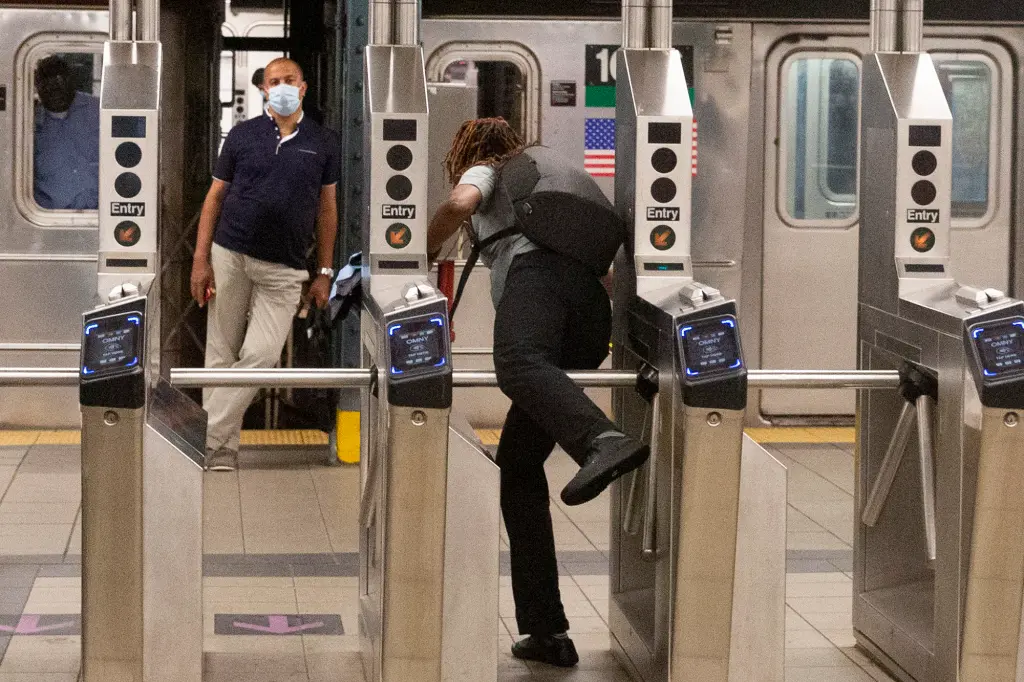New York City’s Metropolitan Transportation Authority (MTA) has reportedly lost $1 billion in revenue due to fare evasion, highlighting a persistent problem that city leaders have struggled to address effectively. Despite rising losses, critics say officials are not doing enough to deter offenders or protect the transit system’s financial stability.
Fare evasion—when passengers enter subways or buses without paying—has become increasingly common in recent years. The MTA estimates that tens of thousands of riders avoid paying fares each day, leading to significant revenue losses that could otherwise fund maintenance, service improvements, and expansion projects.
Transit advocates argue that the financial impact of fare-beating goes beyond the MTA. Lost revenue can translate into higher fares for paying riders, delayed upgrades, and reduced service quality, affecting millions of New Yorkers who rely on public transit daily.
Officials cite several contributing factors, including insufficient enforcement, aging infrastructure, and the challenges of policing crowded stations. Critics argue that city leadership has failed to implement proactive measures, such as upgraded turnstiles, increased staffing, or targeted enforcement programs.
In some areas, fare evasion has become so routine that it affects the overall safety and experience of riders. Subway stations report crowding at turnstiles, confrontations between fare-beaters and enforcement personnel, and rising frustration among paying customers.
Experts say a combination of technology and policy changes could help reduce fare evasion. Automated gates, contactless payment systems, and real-time monitoring can make it more difficult to avoid paying. At the same time, clear penalties, increased fines, and public awareness campaigns may deter would-be offenders.
Despite these potential solutions, city leaders have yet to implement a comprehensive strategy. Critics argue that political concerns, budget priorities, and the complexities of enforcement have delayed meaningful action. In the meantime, the financial gap continues to widen, straining an already challenged transit system.
Some transit advocates also call for a focus on equity. While fare evasion is illegal, enforcement strategies must avoid disproportionately targeting marginalized communities. Balancing deterrence with fairness is key to any long-term solution.
City council members and MTA officials have held hearings and released statements acknowledging the problem. However, critics argue that acknowledgment alone is insufficient. Concrete measures, dedicated funding, and consistent enforcement are necessary to reverse the trend and protect the system’s financial health.
The COVID-19 pandemic exacerbated challenges for the MTA, with ridership initially plummeting and fare evasion rates increasing as enforcement was temporarily reduced. Even as ridership recovers, fare-beating remains a significant issue, leaving the transit authority struggling to recoup lost revenue.
Technology experts suggest that modernizing fare systems could offer both a deterrent and a revenue recovery tool. Mobile ticketing, turnstile upgrades, and better surveillance could reduce opportunities for fare evasion while making enforcement safer and more efficient.
Community leaders emphasize that addressing fare evasion benefits everyone. Paying riders deserve reliable service and fair treatment, while the transit system requires stable funding to maintain and expand essential operations across the city.
For now, the MTA continues to track fare-beating incidents, but critics argue that without stronger leadership and policy changes, the $1 billion loss may continue to grow. The stakes are high: underfunded transit threatens the quality of life, economic vitality, and public safety for millions of New Yorkers.
As the city debates solutions, the message from critics is clear: fare evasion is not a minor problem, and continued inaction will only worsen the financial strain on the MTA and the city’s transit-dependent population.



